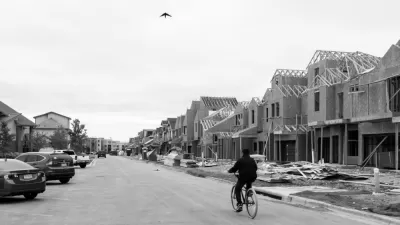The most-dissected generation (yet, at least) is coming of age, and it's time to reevaluate assumptions about their place in the world.

Hyojung Lee separates myth from reality on the always-buzzy topic of Millennials—the largest, most diverse, most misunderstood generation in U.S. history.
Lee wrote a paper, “Are Millennials Leaving Town? Reconciling Peak Millennials and Youthification Hypotheses,” published earlier this year by the International Journal of Urban Sciences. The paper's findings debunk some of the myths about Millennial preferences, especially as the generation inches toward middle age.
Millennials, writes Lee, "delayed their transition into adulthood as compared to older generations, consistent with popular portrayals, but they have begun to catch up in recent years, with rising incomes and as they move from multifamily apartments to single-family homes."
Lee's blog post for the Joint Center for Housing Studies of Harvard University, the first of two promised posts, provides findings on four specific measures of the average Millennial: marital status, homeownership, average personal income, and multifamily residence share. According to Lee's finding, Millennials live up to their billing on marital status and multifamily residence share but are far more typical than perceive on homeownership and average personal income. The trend toward homeownership among Millennials is, at least, more recent.
Indeed, the homeownership rate at age 30 among the early millennials was about 41 percent, while it was 50.5 percent among Gen Xers and even higher among the early boomers (57.8 percent). However, as indicated in my co-authored paper, millennial homeownership has been rapidly catching up in recent years, narrowing the early millennial-Gen X gap from 9.5 percentage points at the age of 30 to 4.8 percentage points at the age of 34.
More detail about each of the four measures listed here and a few infographics are included in the source article.
FULL STORY: ARE MILLENNIALS SO DIFFERENT FROM THE GENERATIONS BEFORE THEM?

Planetizen Federal Action Tracker
A weekly monitor of how Trump’s orders and actions are impacting planners and planning in America.

Maui's Vacation Rental Debate Turns Ugly
Verbal attacks, misinformation campaigns and fistfights plague a high-stakes debate to convert thousands of vacation rentals into long-term housing.

Restaurant Patios Were a Pandemic Win — Why Were They so Hard to Keep?
Social distancing requirements and changes in travel patterns prompted cities to pilot new uses for street and sidewalk space. Then it got complicated.

In California Battle of Housing vs. Environment, Housing Just Won
A new state law significantly limits the power of CEQA, an environmental review law that served as a powerful tool for blocking new development.

Boulder Eliminates Parking Minimums Citywide
Officials estimate the cost of building a single underground parking space at up to $100,000.

Orange County, Florida Adopts Largest US “Sprawl Repair” Code
The ‘Orange Code’ seeks to rectify decades of sprawl-inducing, car-oriented development.
Urban Design for Planners 1: Software Tools
This six-course series explores essential urban design concepts using open source software and equips planners with the tools they need to participate fully in the urban design process.
Planning for Universal Design
Learn the tools for implementing Universal Design in planning regulations.
Heyer Gruel & Associates PA
JM Goldson LLC
Custer County Colorado
City of Camden Redevelopment Agency
City of Astoria
Transportation Research & Education Center (TREC) at Portland State University
Jefferson Parish Government
Camden Redevelopment Agency
City of Claremont





























